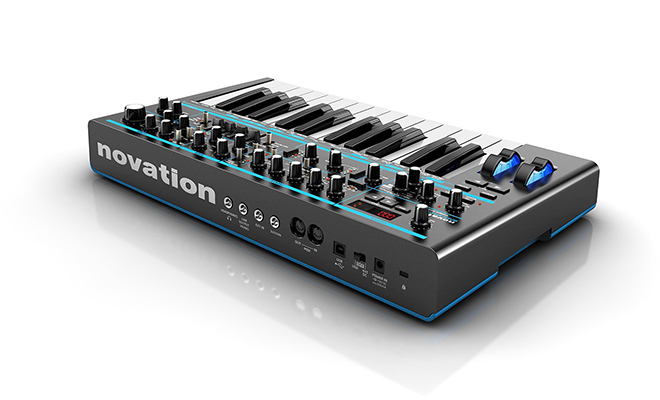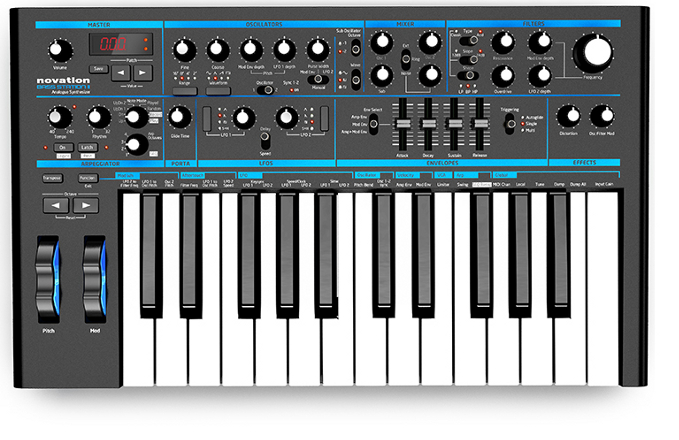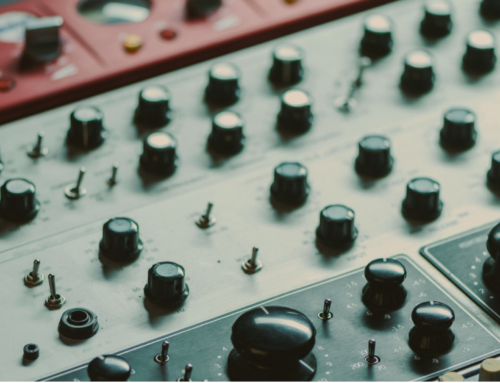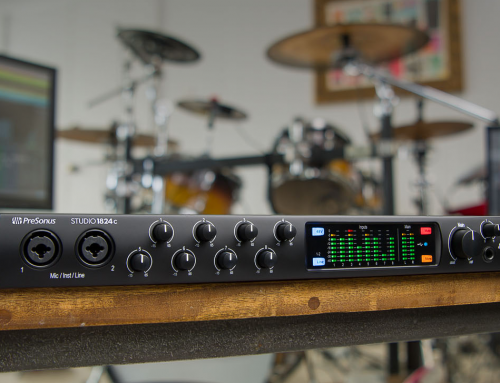In the age of the VST, dance music synths and synth patches are a dime a dozen. With all of the free (or rather unfortunately free-to-pirate) options out there, I mean that quite literally! For a hardware synth to capture the attention of today’s producer, it often must be stylish, affordable, perhaps compact, and have compelling sound. Novation is no stranger to electronic dance music in the digital age, and with these criteria in mind they’ve created the Bass Station II, a powerful analog solution for those who want something more out of their synths than just another window on your computer screen.
Right out of the box, the Bass Station II wins some major style points. Sharp blue accents add a little future to complement the retro of analog synthesis. Metal cylinder toggle switches add to the feeling that you’re operating a space ship when you’re operating the Bass Station. There are plenty of knobs to encourage experimentation as you tweak oscillators, and of course the filter cutoff knob is the largest of them all. Faders for shaping the envelope’s attack, decay, sustain and release are also a welcome alternative to knobs (or worse, keystrokes). The 25-key (2 octave) keyboard also comes equipped with pitch and modulation wheels. The back panel has both headphone and mono line-level outputs, as well as an input for external noise and even a sustain pedal. The keyboard also has not just a USB cable, but dedicated MIDI-in and -out ports, as well as a DC-in power jack for those laptop-free jam sessions (power cable included). For pro-studio compatibility, the audio outputs are both ¼”, so you’ll need an adapter to listen to the synth with most headphones.

The Bass Station II is a joy to operate from first boot-up. Already the ability to tweak patch settings on-board instead of in software will be a treat for most new producers, but even for seasoned hardware synth veterans the Bass Station II manages to balance usability with customizability exceptionally well. While the Korg MS-20 Mini (another modern analog synth) may sound great, it’s a headache to set up and adjust. Not so with the Bass Station II. I felt right at home with the standard yet flexible array of synth controls, and was pleased to see extra touches like filter overdrive and octave/waveform control for the sub-oscillator. The Bass Station II also features an arpeggiator with a decent amount of flexibility. I found it best used for ¼, 1/8, or 1/16 note patterns, but there are 32 arpeggiator rhythms adjustable via a single knob. You can program your own note sequence, or choose from a few different repeating patterns. It’s not the world’s greatest arpeggiator, but it at least gets the job done.

All of the features above would be useless if the Bass Station II had a terrible sound – but I’m happy to report that it doesn’t! In fact, the first note I played was like a breath of fresh air amid today’s harsh digital soundscape. I will confess that I’m an analog junkie, but the Bass Station II paired with my Volca Beats analog drum machine sounded like heaven – at least, for their respective price points. The 70 factory-coded presets aren’t perfect, but most of them are great starting points for your own great patches. Just sitting down, flipping through the presets, and noodling around on the keys generated 6 song ideas in one sitting – something that has never happened for me with a VST synth. Since the waveforms are quite basic, I think you can really judge an analog synth best by its filter – and this one sounds great! You can operate the filter in “Classic” or “Acid” mode (side note: I was actually fairly disappointed with the “Acid” filter, and thought the “Classic” actually made a better acid sound), with a 12dB or 24dB slope, and as a high-pass, band-pass, and of course low-pass filter. LFO, mod wheel, and envelope filter control combine to allow for a great deal of movement to your sound, something I always welcome. While some of the patches I’ve made sound more like they belong in an 80’s action B-movie, this synth is definitely flexible enough to handle most any sound you could want to throw in a modern dance track. Some may complain about the lack of polyphony, which is a fair point. Sorry, no swirling pads, no minor 7th deep-house chords. However, I’m willing to put up with a monophonic synth if it means I get that fat analog sound. Besides, it is a Bass Station after all, and most basslines come one note at a time.
In my opinion, Novation has really knocked it out of the park with the Bass Station II. It looks great sitting on my desk, it feels great on my fingertips, and it sounds great coming through my monitors. While its name may be highly suggestive of its intended purpose, and its monophony only confirms that, I feel it may be versatile enough for applications other than heavy basslines.





